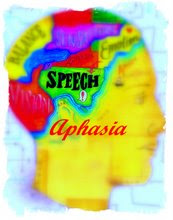Video games could help stroke patients recover
 Video games aren't for the couch bound anymore. As they change, so could their uses. (Lawrence K. Ho / Los Angeles Times) |
That seems to be the consensus from an analysis by Canadian researchers of 12 studies involving 195 stroke patients who tried their hands at virtual-reality games as part of rehabilitation. And the games might even offer an edge. In the five studies that compared video gaming to more traditional therapies, the video-gaming patients were more likely to improve their arm strength than were those who relied on traditional therapies.
A variety of virtual-reality gaming systems now exist, used by children and adults to practice their skills at virtual bowling, boxing and the like. The studies in the latest analysis used both household consoles and gaming consoles customized for rehabilitation, tracking players' movements while they wore gloves or held a remote.
The results, released Thursday, are published in the May issue of Stroke.
Strokes happen when a blood vessel to the brain is blocked or bursts.
If blood is stopped for more than a few seconds, brain cells are starved of oxygen and die. When brain cells die in a part of the brain that controls movement, the stroke victim may have trouble with everyday tasks such as drinking a glass of water or opening a doorknob.
The key to getting mobility back is to strengthen neural connections in the brain -- something that can be done by learning a new skill and practicing it.
Video games -- in which players use a remote to simulate playing a sport or to accomplish some goal -- could be part of that rehabilitation, researchers have speculated.
Small studies have suggested that video games have some advantage over traditional treatment tools, such as learning to play cards, bingo or Jenga, a block-balancing game. A small pilot study by some of the same researchers last year found that stroke patients who played Wii Sports (using a handheld remote to “bowl” or swing a golf club) for a few weeks could perform tasks such as folding a towel about 7 seconds faster than patients who played leisure activities such as cards.
But before you pick up the Wiimote, keep in mind that it’s a little early to prescribe a daily dose of Nintendo to stroke survivors. More research is needed -- with more participants -- before patients or rehab-program directors routinely buy shiny new game consoles for the sake of rehabilitation.
The researchers did conclude that it’s at least safe for stroke patients to play on video games, including those that use virtual reality programs requiring movement. The only side effect, they found in one patient, was nausea. So if the console is already in the house -- no harm, and possible gain. more ready...





0 comments:
Post a Comment